Today’s Current Affairs: 17th July 2025 for UPSC IAS exams, State PSC exams, SSC CGL, State SSC, RRB, Railways, Banking Exam & IBPS, etc
Table of Contents
‘Grandala’ electric-blue bird:
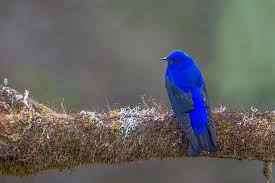
A Rare ‘Grandala’ electric-blue bird was recently spotted in Sainj Valley, Himachal Pradesh.
- Grandala is a species of bird in the thrush family Turdidae.
- Scientific Name: Grandala coelicolor
- It is the only species placed in the genus Grandala.
- It is an arboreal insectivore.
- It ranges across the northeastern Indian Subcontinent and some adjoining regions, existing primarily in the low-to-mid altitudes of the Himalayas.
- It is found in Bhutan, India, Myanmar, and Nepal, as well as Tibet and other areas of China.
- Alpine and subalpine regions, typically found at elevations between 3,000 to 5,000 meters.
- Conservation Status: IUCN Red List: Least Concern.
Pavana River:
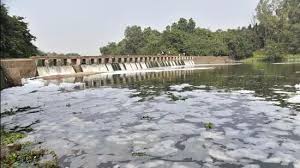
Citizens, including local youth and residents, recently gathered at Akurdi to express their disapproval of the Pavana River rejuvenation project.
- Pavana River is situated in the west of Maharashtra state, in the Pune District.
- The river is a notable river crossing Pune city and divides Pune City and the Pimpri-Chinchwad area.
- It originates from the Western Ghats, about 6 km south of Lonavala.
- The river originates south of Lonavala from the Western Ghats and flows a total of nearly 60 km to meet the Mula River in Pune.
- The Mula River, which later merges with the Mutha River, forming the Mula-Mutha River, ultimately drains into the Bhima River (the largest tributary of the Krishna River).
- A dam is built on this river at Pavana Nagar, called the “Pavana Nagar Dam”.
- It is an earth-fill gravity dam.
- It is 1,329 m (4,360 ft) long and 42.37 m (139.0 ft) high, with a gross storage capacity of 30,500.00 km3.
- It is built with the purpose of providing sufficient water to the nearby localities.
- It provides drinking water to Pune and Pimpri-Chinchwad.
Javelin Missile:

India recently submitted a letter of request to the United States for co-production of Javelin anti-tank guided missiles (ATGMs) in the country.
- It is an American-made, man-portable, anti-tank guided missile.
- It is developed and produced jointly by American defence majors Raytheon and Lockheed Martin.
- It was designed to defeat heavily armored vehicles such as main battle tanks and lighter-skinned military vehicles.
- The weapon also has capability against other target types like fortifications, bunkers, and helicopters.
- It first entered service with the U.S. military in 1996.
- It has an effective range of 2.5 km, with newer models reportedly capable of reaching up to 4 kilometers.
- Weight: 5.11 kg
- It uses “fire-and-forget” technology to guide itself to the target without external commands or target designation.
- Soldiers can reposition immediately after firing, or reload to engage another threat with the Javelin system.
- It uses automatic infrared guidance that allows the user to seek cover immediately after launch.
- The missile can engage targets using either a direct or top-attack mode, with the latter designed to exploit vulnerabilities in the thinner armor on the tops of tanks.
Antimatter:
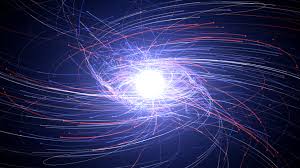
An international collaboration of scientists based in Europe reported that they had, for the first time, observed that the matter and antimatter versions of a type of subatomic particle called a baryon decay at different rates.
- Antimatter is the same as ordinary matter except that it has the opposite electric charge.
- The antimatter particles corresponding to electrons, protons, and neutrons are called positrons (e+), antiprotons (p), and antineutrons (n); collectively they are referred to as antiparticles.
- The electrical properties of antimatter being opposite to those of ordinary matter, the positron has a positive charge and the antiproton a negative charge; the antineutron, though electrically neutral, has a magnetic moment opposite in sign to that of the neutron.
- Matter and antimatter cannot coexist at close range for more than a small fraction of a second because they collide with and annihilate each other, releasing large quantities of energy in the form of gamma rays or elementary particles.
- Antimatter was created along with matter after the Big Bang. But antimatter is rare in today’s universe.
- Humans have created antimatter particles using ultra-high-speed collisions at huge particle accelerators such as the Large Hadron Collider, which is located outside Geneva and operated by CERN (the European Organization for Nuclear Research).
YD One:
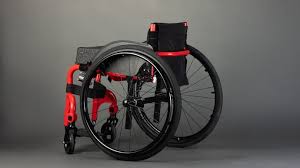
IIT Madras recently launched YD One, India’s lightest wheelchair.
- YD One is India’s lightest active wheelchair and the country’s first indigenously developed precision-built mono-tube rigid-frame wheelchair.
- It was developed by IIT Madras’ TTK Center for Rehabilitation Research and Device Development (R2D2) in collaboration with the startup Thryv Mobility.
- It is fully customised for each user’s body, posture, and daily mobility needs.
- It is built with aerospace-grade materials weighing just nine kilograms, its ultra-lightweight and precision-engineered design delivers maximum strength and energy efficiency.
- It can support up to 120 kg.
- The compact frame allows the wheelchair to be easily lifted and accommodated in vehicles such as cars, auto-rickshaws, and public transport, addressing longstanding concerns around portability and access.
- YD One aims to provide high-performance mobility at a fraction of the cost of expensive imports, enabling greater independence and dignity for users.
Tadoba-Andhari Tiger Reserve:

An earthquake of magnitude 6.7 struck off the coast of Indonesia’s Tanimbar Islands region.
- The Tanimbar Islands are in the Indonesian province of Maluku, at the end of the long arc of islands that stretches from Sumatra through Java, Bali, Lombok and down through Timor.
- These Islands are a group of around 30 islands lie between the Banda and Arafura seas.
- It is part of Kei Archipelago and it belongs to Southeast Maluku Regency.
- The largest island in the group is Yamdena, some seventy miles long and forty miles wide at its widest.
- This island has thickly wooded hills along its eastern coast, while its western coast is lower and often swampy.
- Indonesia straddles the Pacific Ring of Fire, a highly seismically active zone, where different plates on the Earth’s crust meet and create a large number of earthquakes and volcanic activity.
Aspergillosis:
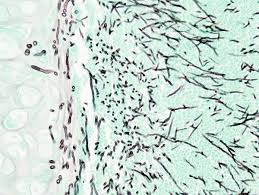
The blue rock pigeon — also known as Columba livia — has found itself at the center of a growing controversy due to presumed aspergillosis disease carriers.
- It is an infection caused by Aspergillus — a genus of mold that includes hundreds of species.
- The most common culprit in infections is Aspergillus fumigatus, a fungus that produces tiny airborne spores.
- These spores, when inhaled in large quantities, can cause respiratory illness, especially in individuals with weakened immune systems, preexisting lung conditions, or prolonged exposure to dusty, moldy environments.
- Aspergillus is ubiquitous and found in soil, decaying vegetation, compost, dust, old building materials, air-conditioning systems, bird droppings, and even in grain and spices.
- It thrives in damp and poorly ventilated areas.
- It is not contagious it will not spread from person to person.
- It causes different types of infections with some differences in symptoms.
- Cough and shortness of breath are common symptoms among all types of aspergillosis. Some types of infections cause nasal congestion, headache, fatigue, and coughing up blood.
- Treatment depends on the type of infection and includes antifungal medications like voriconazole or itraconazole.
Prime Minister Dhan-Dhaanya Krishi Yojana:
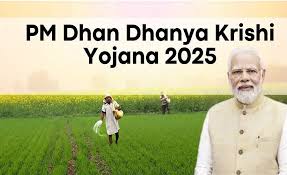
The Union Cabinet chaired by the Prime Minister approved the Prime Minister Dhan-Dhaanya Krishi Yojana.
- Prime Minister Dhan-Dhaanya Krishi Yojana is first of its kind focusing exclusively on agriculture and allied sectors.
- It aims to enhance agricultural productivity, increase adoption of crop diversification and sustainable agricultural practices, augment post-harvest storage at the panchayat and block levels, improve irrigation facilities and facilitate availability of long-term and short-term credit.
- It will be implemented through convergence of 36 existing schemes across 11 Departments, other State schemes and local partnerships with the private sector.
- Under this scheme 100 districts will be identified based on three key indicators of low productivity, low cropping intensity, and less credit disbursement.
- The number of districts in each state/UT will be based on the share of Net Cropped Area and operational holdings. However, a minimum of 1 district will be selected from each state.
- Committees will be formed at District, State and National level for effective planning, implementation and monitoring of the Scheme.
- A District Agriculture and Allied Activities Plan will be finalized by the District Dhan Dhaanya Samiti, which will also have progressive farmers as members.
- The District Plans will be aligned to the national goals of crop diversification, conservation of water and soil health, self-sufficiency in agriculture and allied sectors as well as expansion of natural and organic farming.
- Progress of the Scheme in each Dhan-Dhaanya district will be monitored on 117 key Performance Indicators through a dashboard on monthly basis.
- NITI will also review and guide the district plans. Besides, Central Nodal Officers appointed for each district will also review the scheme on a regular basis.
- As the targeted outcomes in these 100 districts will improve, the overall average against key performance indicators will rise for the country.
- The scheme will result in higher productivity, value addition in agriculture and allied sector, local livelihood creation and hence increase domestic production and achieving self-reliance (Atmanirbhar Bharat).
UN SDG Report 2025:
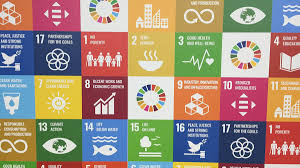
The UN SDG Report 2025, released at the High-Level Political Forum, warns that 35% of measurable SDG targets are stagnating or reversing, with five years left to 2030.
UN SDG Report 2025:
SDG 2: Zero Hunger
- Hunger affected 9.1% of the global population in 2023 (~713–757 million people).
- 2.33 billion people faced moderate or severe food insecurity in 2023.
- Sub-Saharan Africa: 23.2% hunger prevalence and Southern Asia: 281 million hungry.
SDG 4: Quality Education
- 57% of targets show no progress or are regressing.
- School completion, foundational literacy, and gender parity remain unmet in many nations.
SDG 6: Clean Water & Sanitation
- 2.2 billion people lack safely managed drinking water.
- 3.4 billion people have no access to sanitation and 1.7 billion lack hygiene access.
SDG 8: Decent Work & Economic Growth
- Half the targets stagnated or regressed.
- 57.8% of workers globally are in informal employment.
- Youth unemployment in 2024 stood at 12.9%, 3× adult rate (3.7%).
SDG 10: Reduced Inequalities
- Rising inequality across income, access to vaccines, digital divide, and climate vulnerability.
- No significant redistribution mechanisms expanded post-COVID-19.
SDG 14: Life Below Water
- 40% of targets regressing.
- Ocean acidification, marine pollution, and overfishing worsening.
- Least funded SDG, as highlighted at UN Ocean Conference 2025.
SDG 3: Good Health & Well-Being
- Maternal mortality and universal health coverage targets stalled.
- Health systems under post-pandemic strain and chronic underinvestment.
SDG 12, 15, 16 (Responsible Consumption, Life on Land, Peace & Justice)
- 40–42% of targets off-track.
- Forest loss, biodiversity erosion, institutional backsliding seen in many nations.
Child Adoption Crisis in India : Report
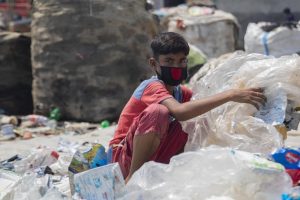
A new RTI-based report reveals a widening gap between adoptable children and prospective parents in India, with 13 families waiting per child, triggering concern over delays, legal bottlenecks, and policy inaction.
Child Adoption Crisis in India:
- 13:1 Ratio (2025): For every 1 child legally free for adoption, 13 prospective parents are waiting — up from 11:1 in 2021.
- Parents Waiting (2025): 36,381 families registered on CARA portal.
- Children Available: Only 2,652 declared legally free for adoption.
- Delay in Referrals: Average wait time has increased from 1 year (2017) to 5 years (2025).
- Children in CCIs: Over 22,000 children live in Child Care Institutions, but only a fraction (12%) are cleared for adoption.
- Himachal Pradesh: Only 1 child free for adoption, while 829 are in CCIs.
- Maharashtra: Only 236 children adoptable out of 5,284 in CCIs.
- Age Group Concern: Nearly 34% of children in the adoption pool are aged 14–18, a group less likely to be adopted.
97th Foundation Day of ICAR:
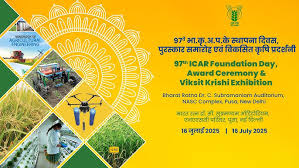
The 97th Foundation Day of ICAR was celebrated in New Delhi, where Union Agriculture Minister addressed scientists and farmers.
Major Initiatives Announced at ICAR’s 97th Foundation Day:
- Viksit Krishi Sankalp Abhiyan: Largest farmer-scientist dialogue, 500 research areas identified for region- and crop-specific needs.
- Field-Guided Research Agenda: Farmer-driven research priorities and teams to adopt “One Team, One Goal” model.
- Natural Farming Push: Focus on chemical-free, sustainable agriculture for long-term environmental health.
- Fertilizer Testing Kits: Portable kits to help farmers verify soil and input quality, curb adulteration.
- Toll-Free Grievance Helpline: To report fraud in seeds and fertilizers, crackdown on 30,000+ unregulated bio-stimulants.
- Ethical MoUs and Pricing Oversight: Mandatory price fairness in ICAR-industry collaborations to protect farmer interests.
The Indian Council of Agricultural Research (ICAR):
- It is an autonomous apex body under the Ministry of Agriculture and Farmers’ Welfare, responsible for coord nating agricultural education, research, and extension across India.
- Founded: 16 July 1929 (as Imperial Council of Agricultural Research).
- Reconstituted under: Societies Registration Act, 1860.
- Headquarters: Located in New Delhi.
- Parent Body: Department of Agricultural Research and Education (DARE).
- President (Ex-Officio): Union Minister of Agriculture.
- Key Functions:
- Promote Education & Research: Plan, fund, and coordinate R&D in agriculture, fisheries, animal husbandry, agroforestry, home science, and allied fields.
- Technology Transfer & Extension: Act as a central knowledge hub for farmers through publications, exhibitions, and technology outreach programs.
- Capacity Building: Support skill development and higher agricultural education through competitive examinations and recruitment (ASRB).
- Consultancy & Collaboration: Partner with national institutions like CSIR, BARC, and international bodies for integrated rural development and post-harvest solutions.
- Policy Advice: Guide government on sustainable practices, innovation, and food security.
Gujarat Launches India’s First Tribal Genome Sequencing Project:
Gujarat became the first Indian state to launch a Tribal Genome Sequencing Project to build a reference genetic database aimed at improving healthcare access for tribal populations.A pioneering genomic research initiative to sequence the genomes of 2,000 tribal individuals across 17 districts of Gujarat to enhance precision medicine. Launched By: Implemented by the Gujarat Biotechnology Research Centre (GBRC). Objectives is to identify genetic risk markers linked to inherited disorders like: Sickle cell anaemia, Thalassemia,Hereditary cancers.
Splashdown Landings : ISS
Indian astronaut Shubhanshu Shukla and the Axiom-4 crew returned safely after a 20-hour journey from the International Space Station (ISS), splashing down in the Pacific Ocean aboard the Crew Dragon spacecraft.Splashdown is a space capsule landing method in which the spacecraft touches down on a water surface, typically the ocean, using parachutes and buoyancy systems. Capsules like SpaceX’s Crew Dragon and ISRO’s upcoming Gaganyaan module are designed for sea recovery operations.
AI Appreciation Day:
India observed AI Appreciation Day on July 16 to highlight the country’s rapid progress in artificial intelligence across sectors like healthcare, education, governance, and agriculture.An annual event that recognizes the transformative role of AI in society, and acknowledges the contributions of developers, scientists, and policymakers in advancing AI for public good. Celebrated On: July 16 every year, globally and now with active observance in India.
Objectives is to Celebrate AI innovations that solve real-world challenges, Raise awareness about the ethical use of AI in public and private sectors, Promote inclusive growth by integrating AI into governance and service delivery, Encourage youth participation and skilling in AI technologies.
Birth Anniversary of Kumaraswami Kamaraj:
The Prime Minister paid homage to Freedom Fighter and Former Chief Minister of Tamil Nadu K. Kamaraj on his birth anniversary (15th July 2025). Born in 1903 in Tamil Nadu, he was inspired to join the freedom struggle by the Jallianwala Bagh massacre.In April 1930, Kamaraj joined the Salt Satyagraha Movement, and in 1942, he was jailed for his involvement in the Quit India Movement. He was also elected to the Constituent Assembly of India in 1946, and later to Parliament in 1952. He introduced free education and the mid-day meal scheme in schools. His birth anniversary is observed as Education Development Day in Tamil Nadu, honouring his enduring legacy. In recognition of his service to the nation, he was posthumously awarded the Bharat Ratna, India’s highest civilian honour, in 1976. He passed away in 1975, at the age of 72.
Union Home Minister recently paid tribute to Hemam Neelmani Singh:
Union Home Minister recently paid tribute to Hemam Neelmani Singh, a prominent freedom fighter from Manipur associated with the Indian National Army (INA), during a posthumous felicitation event organized by the Bharat Vikas Parishad. Hemam Neelmani Singh was a freedom fighter, social reformer, and former Deputy Education Minister of Manipur. He played a crucial role in India’s independence struggle, especially in the Northeast, and contributed significantly to post-independence educational and linguistic reforms.




